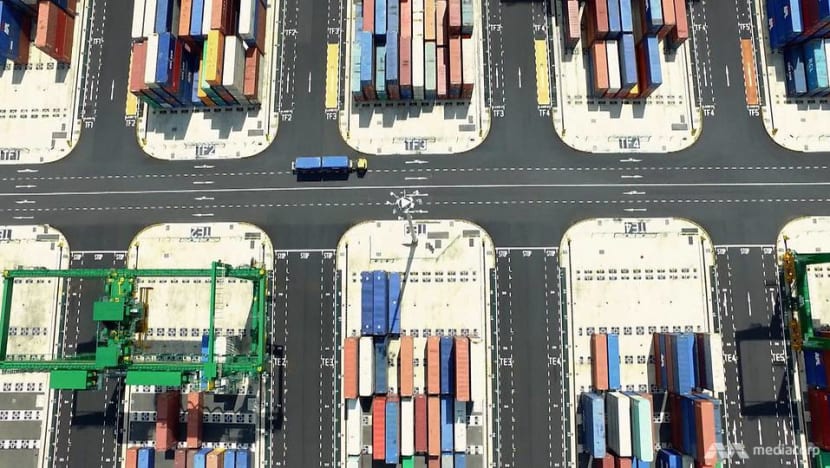PSA Singapore, A*STAR to develop large-scale fleet management solution for AGVs at Tuas Port

A mock-up view of Tuas Mega Port when completed.
SINGAPORE: PSA Singapore and the Agency for Science, Technology and Research (A*STAR) have signed a research collaboration agreement to jointly develop a “large-scale fleet management solution” for automated guided vehicles (AGVs) at Tuas mega port.
The system will allow AGVs to “move containers efficiently and securely in the next generation port at Tuas”, PSA and A*STAR said in a news release on Wednesday (Mar 2).
“Tuas port will be the largest fully automated container terminal in a single location with an annual handling capacity of 65 million twenty-foot equivalent units (TEUs),” the agencies added.
TEU is a unit of measurement used to determine cargo capacity for container ships and terminals.
AGVs play "a significant role" in automating yard and wharf operations for Tuas port due to their versatility and manoeuvrability in picking up and transporting containers, PSA and A*STAR said.
As these are electric vehicles, they are also greener and more sustainable than diesel prime movers, reducing carbon emissions by about 50 per cent.
The fleet of AGVs is expected to increase in tandem with large-scale port operations.
“To meet the demands of a larger AGV fleet, PSA requires an intelligent, advanced fleet management system that is responsive and can handle the computational load,” the agencies said.
“This new fleet management solution for AGV operations is also expected to achieve significant cost savings through the reduction of infrastructure and operational costs."
PSA and A*STAR’s Institute of High Performance Computing (IHPC) will co-develop advanced automation and digitalisation solutions that can address these needs, they added.
“IHPC will contribute its expertise in advanced high performance computing technologies and algorithms to develop accelerated solutions for large-scale fleet management of AGVs,” PSA and A*STAR said.
"PSA will contribute its expertise in the design of algorithms, provide a simulation platform to conduct the proof of concept, as well as furnish its wealth of experience and domain knowledge in the development and operation of the existing AGV fleet management system."
The collaboration also includes the development of innovative techniques that will allow a scalable design with multiple AGVs coordinating seamlessly and at the same time.
This will ensure operational safety, PSA and A*STAR said.
Upon successful development, PSA will look to apply the smart solutions to future enhanced fleet management systems as operations in Tuas port gradually scale up, while the addition of new technologies such as 5G will further enhance computation performance, the agencies added.
“We look forward to leveraging the diversity of ideas and thought to drive technological innovations which will enhance our operational agility and scalability,” said Mr Ong Kim Pong, Regional CEO Southeast Asia at PSA International.
“This collaboration will bring us closer to our vision of developing an intelligent, resilient and sustainable port of the future.”
Dr Lim Keng Hui, executive director of IHPC, said the partnership with PSA “demonstrates A*STAR’s contribution to the maritime industry by applying our research capabilities in high performance computing, and modelling and simulation to create intelligent and scalable technological solutions”.
The new port, expected to be the world’s single largest fully automated container terminal, is slated to be fully operational in the 2040s. It will replace existing facilities at Tanjong Pagar, Pasir Panjang, Keppel and Pulau Brani.
It opened in phases from last year, and the facility can eventually handle up to 65 million TEUs annually.
















